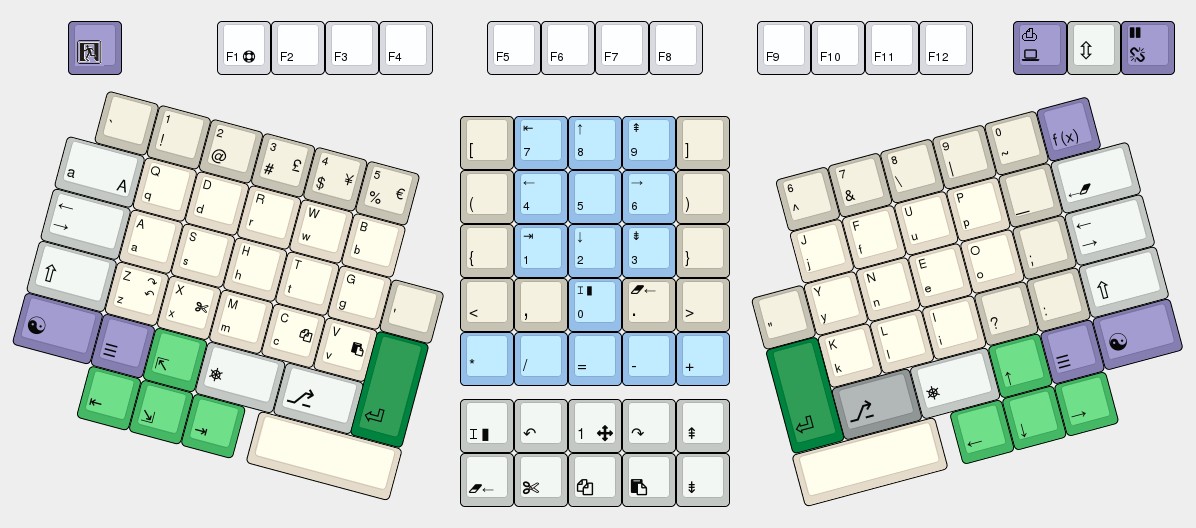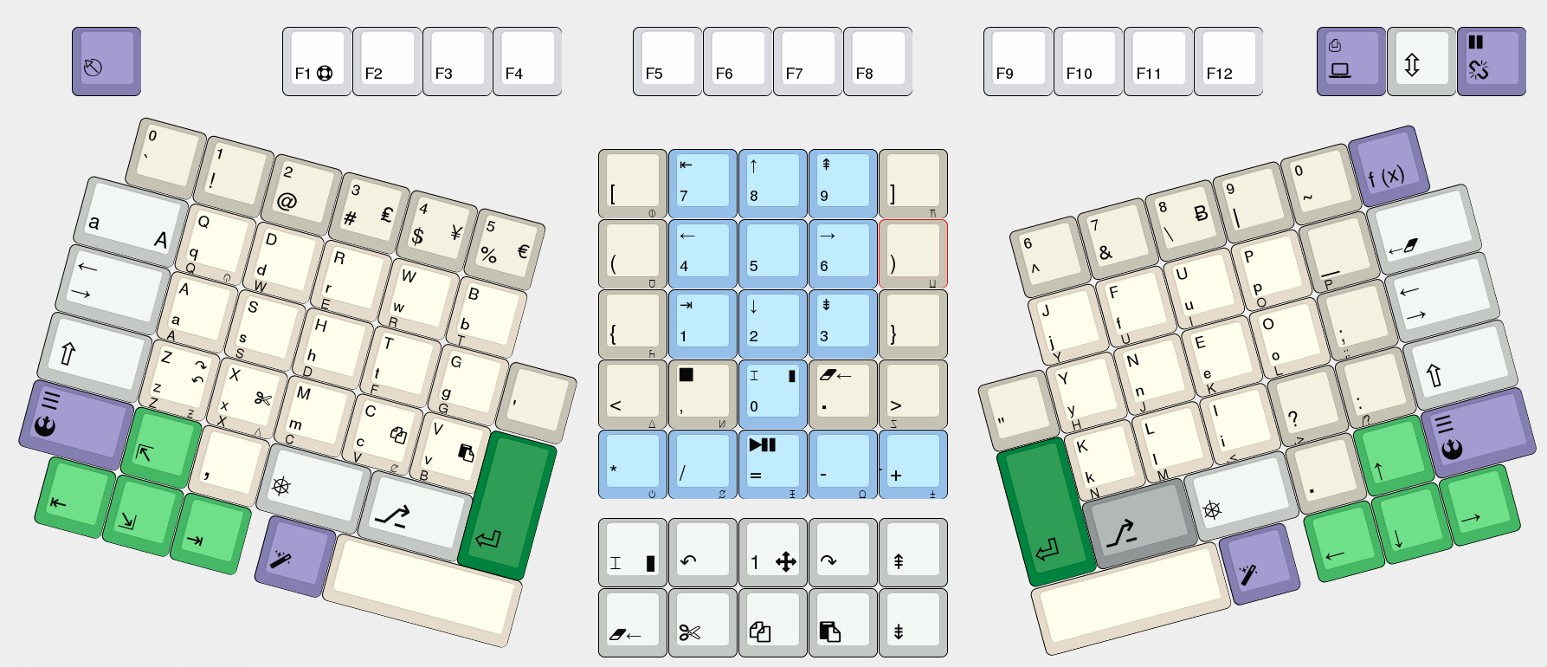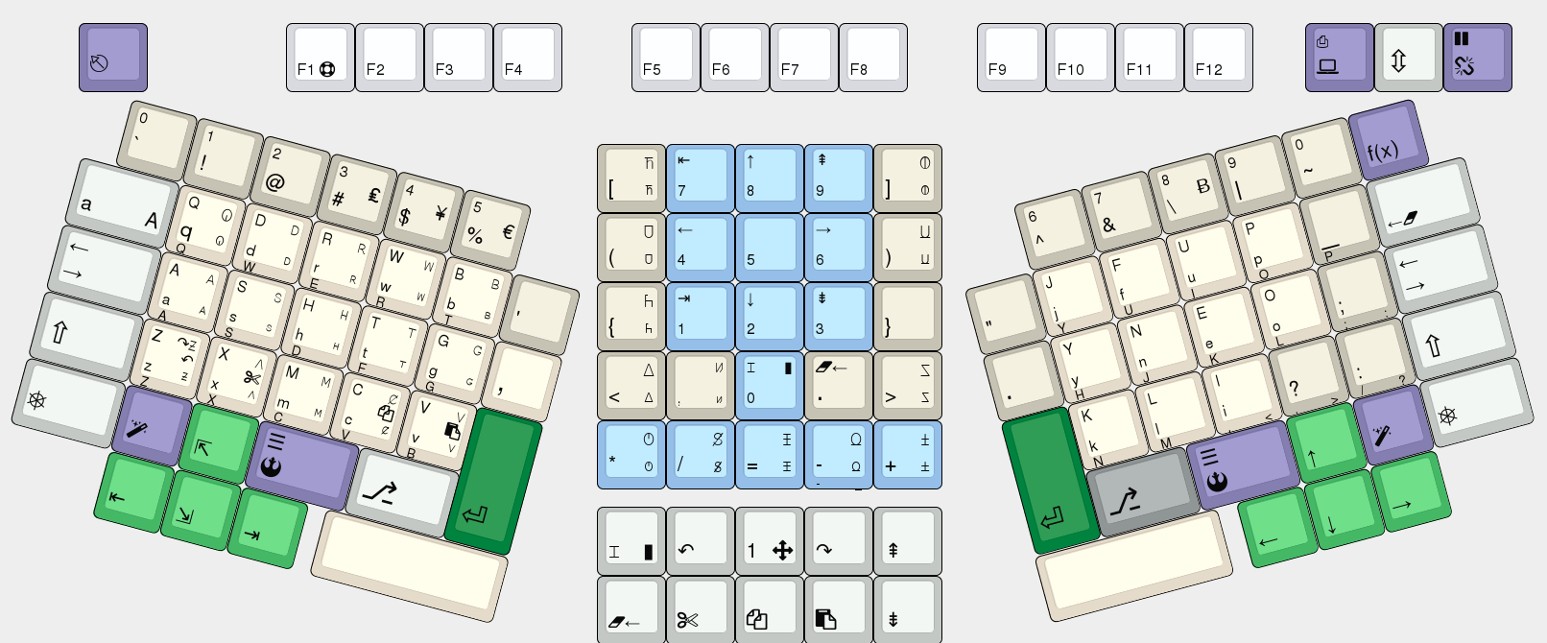Continues from Part 4
When ordering the keycaps I had to make a few colour changes. Also changed the Esc logo from an airplane to the international symbol sign, and asked the FontAwesome people to add it to their collection
Decided the Yin Yang symbol was a bit too clichéd and Eastern, so switched it for something more interesting. I had seen the symbol in FontAwesome but had no idea what it was, but my interest was piqued. But the Internet always delivers, and a few days later I stumbled across some Star Wars symbols and there is was… a quick visit to Wikipedia and it’s fate was sealed. The Rebel Alliance lives. I also noticed that recent Microsoft keyboard designs have started playing down that key, and the Menu key, so I decided to combine them into one. I was looking for an extra key, because the period and comma were buried in the numpad, and while useful there when dealing with numbers, it was a bit inconvenient the rest of the time for such frequently used characters. I added some extra ones.
I also added a “Magic” key on both sides. The idea with this is that the user can assign it to do whatever they want it to. It may also come in handy when playing games. This required moving both nav clusters one key towards the outsides.
The Escape symbol looked a bit tacky to I tried using the Unifont symbol for Escape, but the fonts I have don’t do it so nicely. Other fonts that do are not free. I have asked FontAwesome to add it in as well …
Finally, I added some MultiMedia controls. Not happy with them as the only ones I could find where in FontAwesome and they’re a bit heavy. The volume-up and volume-down characters would not copy so I could not insert them.
Upon reflection I decided that the locations of the new period and commas were not finger-friendly, so moved them to the middle, below the quote symbols. Also switched the Control and Meta/Menu keys back to more conventional positions, particularly for people who are used to the ctrl-a/z/x/c/v key shortcuts. This allowed me to move the nav keys back in closer toward the middle again.
Lastly, I’ve been dabbling on-and-off over the years with Unifon, which was designed to be a rational way of spelling, not only for English but also other languages. In practice it was used to rapidly teach children to read. The English set consists of 40 letters, so I tried adding them to the layout. The idea is that for example, one of the Magic keys could be used to switch from normal letters to the Unifon set, to make it easy to type in those glyphs. I marked lower and upper letters. Originally Unifon only had uppercase, but it does tend to look it everything is shouting, so they developed “small cap” versions to act as lowercase. This contrasts to English where the upper and lowercase letters often look completely different, presenting an extra hurdle to those learning to read. The names of the letters are also different to their pronunciation, while that is not the case in Unifon.
In assigning the non-standard letters, I tried to pick keys which would hint at the actual letter.
Continues in Part 6.



